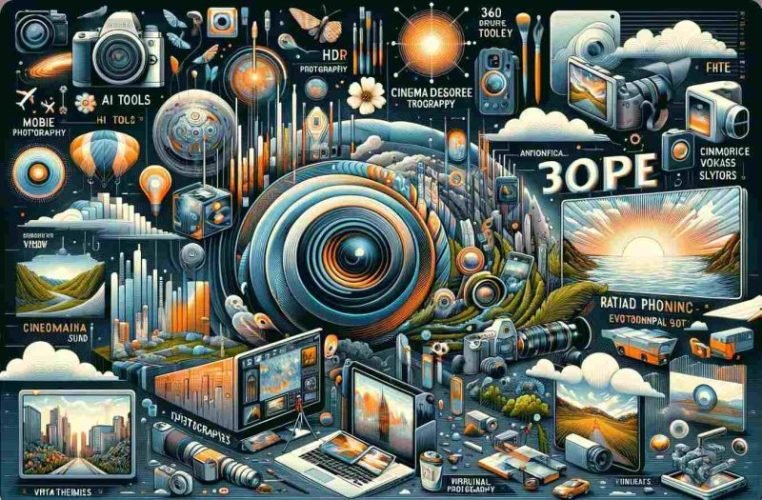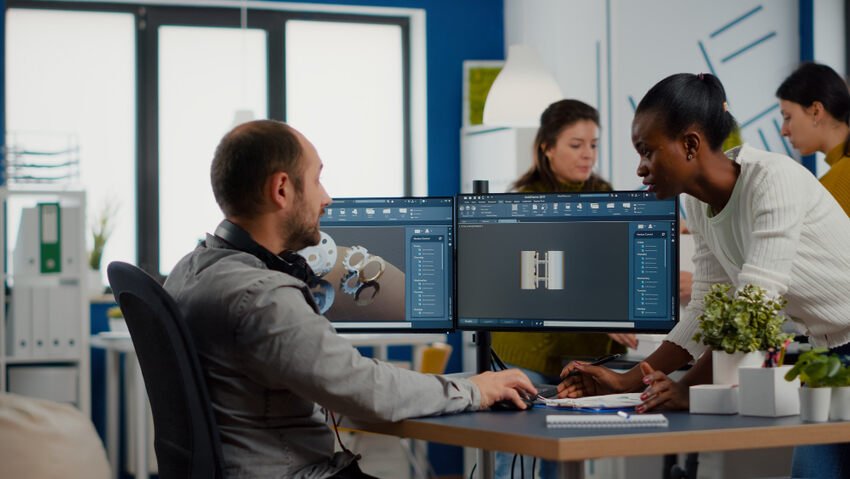Innovations do not stop at some art form; digital art photography is a fine example of this statement. In the meantime of new technology and progress ranging from digital means and software, new horizons in the art of photographers and other artists are opened. This article is a foray into one-of-a-kind concepts in contemporary digital art photography and how this trend continues to work for artists and the industry.
1. Artificial Intelligence and Machine Learning
The latest trend in digital art photography is very closely connected with artificial intelligence or machine learning algorithms, which not only mend the digital images, make them clearer and the colours brighter but also compose pictures that might have otherwise been very time-consuming. AI can currently alter and enhance images using artificial intelligence to change photographs in a way that would only be possible manually with software to a professional standard, increasing the accessibility of high-level photography to both the dominant recreational and active professional markets. Also, it is now possible to create artistic images based on the learned archives or styles, eliminating any prior limitations.
2. High Dynamic Range Imaging (HDR)
HDR photography is one of the most popular techniques in digital art photography; it enables the photographer to obtain several tones better than in ordinary digital photo manipulation. In HDR photography, just one picture is taken and blended with other pictures taken from the same scene but with different exposure levels to provide the best representation of the overall exposure range of the scene. This technique is especially useful for landscape and architectural photography, where the transition between the illuminated upper parts and the shaded lower parts of the scene might be drastic.
3. 360-Degree Photography
Due to VR and AR and the expansive use of both these technologies, 360-degree photography has gained a lot of steam. This technique includes creating a full 360-degree circle view of a scene for an all-round and compelling view. As traditional museums experiment with 360-degree cameras for virtual tours, digital artists are employing the apparatus to create new and exciting works of art that highlight the possibilities of photographing a subject in various orientations.
4. Mobile Photography
Today, with the availability of camera phones, many people can engage in photography based on the availability of reasonably potent gadgets. Mobile photography is especially significant in the realm of digital art, as applications and editing tools developed for smaller screens allow artists to create and edit their work instantly and freely. This trend is enabling the new generation of digital artists to further use mobile devices, where they are producing professional-quality masterpieces that are blurring the conventional line between photography and art.
5. Composite Photography
Compositing, where one can effectively combine two or more images with the help of the computer, is constantly evolving. This technique helps the artists depict scenes that are nearly dreamlike and virtually impossible using photos from different sources. This technique was employed for storytelling purposes or aesthetic concepts, which produce the audience with the artistic desire of the mind.
6. Cinematic Photography
Cinematic photography employs creative colour grading, lighting and framing as usual in film because it is influenced by this modern visual style of cinema. This trend makes digital art photography remarkable and gives them an emotional appeal, which is very appealing to the watchers. Technology for capturing moving images often aims to narrate or share a story, bringing the audience into an experience within a smoothly built world.
7. Authenticity and Rawness
Rather than being air-brushed, look akin to photofit of mannequins, there is an increasing movement for reality. It is quite encouraging that more photographers today are willing to depict real life situations and do not retouch them. This trend is attributed to the over-crafted, clean aesthetic that has been prevalent in social media applications and it brings a much more realistic feeling that people enjoy.
8. Environmental and Social Themes
Modern artists are reimagining their work to speak out about environmental and social justice concerns. Whether it be in relation to climate change, women’s rights or equality, digital art photography is fast becoming a way of communicating and bringing awareness to various causes. These images are usually provocative and involve some symbolism or graphic description to challenge people and make them act or discuss the matter about our world.
9. Virtual Photography
Digital technology, especially the culture of playing video games and involvement in virtual environments, has brought into reality a novel concept called virtual photography. Using the photography features in video games or other simulated environments, photographers go out into the digital realm to get photos. As this type of photography makes it possible to arrange shots in scenes that can never be brought into reality, it provides liberating freedom in creativity.
10. NFTs and Digital Ownership
That is why, along with other modern digital forms, non-fungible tokens bring real changes to the practice of owning photographic digital art. For the photographers, application of NFTs can be used to sell digital images for other functions as unique offerings, which in return creates an additional market for the photographers’ work and direct control over the circulation of their images. Therefore, it greatly contributes to understanding how digital art is sold and how it is to be considered in the gallery space.
Conclusion
Digital art photography is now at an innovative intersection where digital advancements and creative processes are integrated, and the scope is constantly evolving. Who could have argued that the ideas behind Lolita’s photoshoots would transform emerging artists’ aesthetics and outline the major tendencies in contemporary photography, art, and media? Digitalites’ constant development brings aesthetic shifts to the capturing, perceiving, and interacting aspects of digital art photography. By staying attuned to these trends, artists and enthusiasts can better understand the trajectory of this vibrant and dynamic field.
Read Dive is a leading technology blog focusing on different domains like Blockchain, AI, Chatbot, Fintech, Health Tech, Software Development and Testing. For guest blogging, please feel free to contact at readdive@gmail.com.





